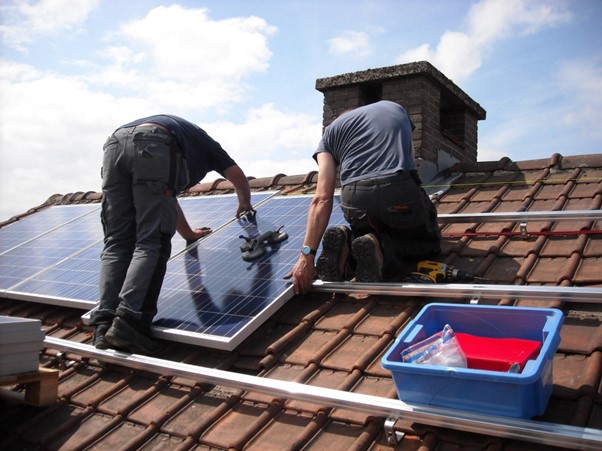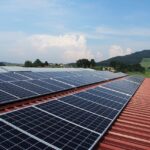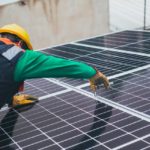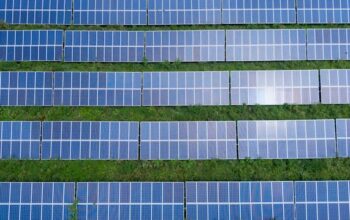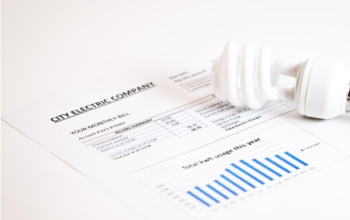Tired of watching your electricity bills climb, despite your leap into solar energy? You’re not alone. Many homeowners find their original solar energy installation doesn’t quite meet the ever-growing demands of their household.
The solution? Adding solar panels to an existing system. This move isn’t just about increasing your energy production. It’s a strategic step toward maximizing your home’s energy efficiency and independence.
With the right approach, this addition can transform your solar setup into a powerhouse that not only meets but exceeds your energy needs. If you’re pondering the feasibility and benefits of expanding your solar capabilities, stick around. This article is your gateway to understanding how a few more panels can make a significant difference in your energy consumption narrative.
The Basics of Adding Solar Panels To an Existing System
When you first install a solar system, it’s tailored to meet your energy needs at that time. But as life goes on, those needs can change.
Maybe you’ve welcomed a new family member, added an electric vehicle to your garage, or started working from home. Any of these changes can boost your electricity usage and prompt you to think about expanding your solar setup. Discovering solar solutions that can accommodate your growing needs becomes essential.
Before you add more panels, it’s crucial to consider a few key points. First, check if your roof has enough space to accommodate additional panels. Not all roofs are created equal, and the available roof space can significantly influence your expansion plans.
It’s also important to assess the current capacity of your solar system. Can it handle more panels, or will you need to upgrade other components as well?
Compatibility is another major factor. The new panels should work well with your existing setup to ensure that the entire system operates efficiently.
Technical Considerations
Adding solar panels to an existing system isn’t as straightforward as just bolting more panels onto the roof. The technical side of things plays a huge role in how well the expanded system will perform.
One of the first things to look at is whether the new panels will match the type and efficiency of your current setup. Solar technology advances quickly, and the panels you installed a few years ago may not be on the market anymore. Finding a close match is key to maintaining system efficiency.
The capacity of your inverter is another critical consideration. Inverters convert the DC electricity generated by your panels into AC electricity that can power your home.
If you add more panels, your inverter needs to have the capacity to handle the increased output. Otherwise, you might need to upgrade to a larger inverter.
Finally, evaluating the age and technology of your existing system is essential. Older systems might not integrate well with the latest panel technologies and potentially lead to inefficiencies. Ensuring compatibility across all components of your solar setup (panels, inverter, and monitoring system) will help you get the most out of your solar investment. Click here to discover solar solutions in Columbus.
Financial Implications
Expanding your solar system comes with its own set of costs. The price tag isn’t just about buying new panels. You might also need to upgrade your inverter to handle the extra power.
Plus, there’s the cost of having a professional come out and install everything properly.
But here’s where it gets interesting. Despite these upfront costs, adding more panels can actually save you money in the long run. Think about it: more panels mean more electricity generated, which means less reliance on the grid and lower energy bills each month.
Over time, these savings can add up, helping to offset the initial investment. It’s a bit like planting a tree. You water it and wait. As it grows, it starts to give back, providing shade and reducing your cooling costs.
Similarly, your expanded solar setup will gradually pay for itself through reduced utility bills.
Regulatory and Incentive Considerations
When you’re thinking about adding more solar panels, it’s not just a matter of buying them and sticking them on your roof. There are rules to follow.
Depending on where you live, you might need to get permits or have your system inspected to make sure it meets all the local codes and regulations. This is where it pays to do your homework.
But it’s not all red tape. Many places offer incentives or rebates for solar energy installations. These can take the sting out of the upfront costs.
For instance, some states offer tax credits for solar installations, which can reduce the amount of money you owe come tax time. Others might have rebate programs that give you cash back for each watt of solar power you install.
These incentives are designed to encourage more people to go solar and make it easier and more affordable to boost your system’s capacity.
Practical Steps for Adding Panels
So, you’ve decided to boost your solar power by adding more panels. First up, you’ll want to check how much energy you’re currently using versus what you’re generating.
This is where an energy audit comes into play. It’s like taking your car in for a check-up; you want to understand its performance before making any changes.
Next, reach out to a professional installer for an in-depth look at your solar setup. They can advise on the best type of panels for your system and how many you’ll need.
Finally, they’ll give you a quote, laying out the costs for both the panels and their installation. This step-by-step approach ensures you make informed decisions, optimizing your solar system for better efficiency and savings.
Expand Your Solar Horizons
Adding solar panels to an existing system emerges as a savvy strategy for those looking to enhance their solar performance. We’ve walked through the nuts and bolts of making your solar setup more robust, covering everything from technical tweaks to leveraging solar incentives.
This move isn’t just an upgrade. It’s a commitment to a more sustainable and energy-efficient future.
Craving more insights on how to make your home the epitome of energy efficiency? Swing by our Home Care section and discover a treasure trove of tips and tricks designed to power your home’s energy revolution
Related Posts

